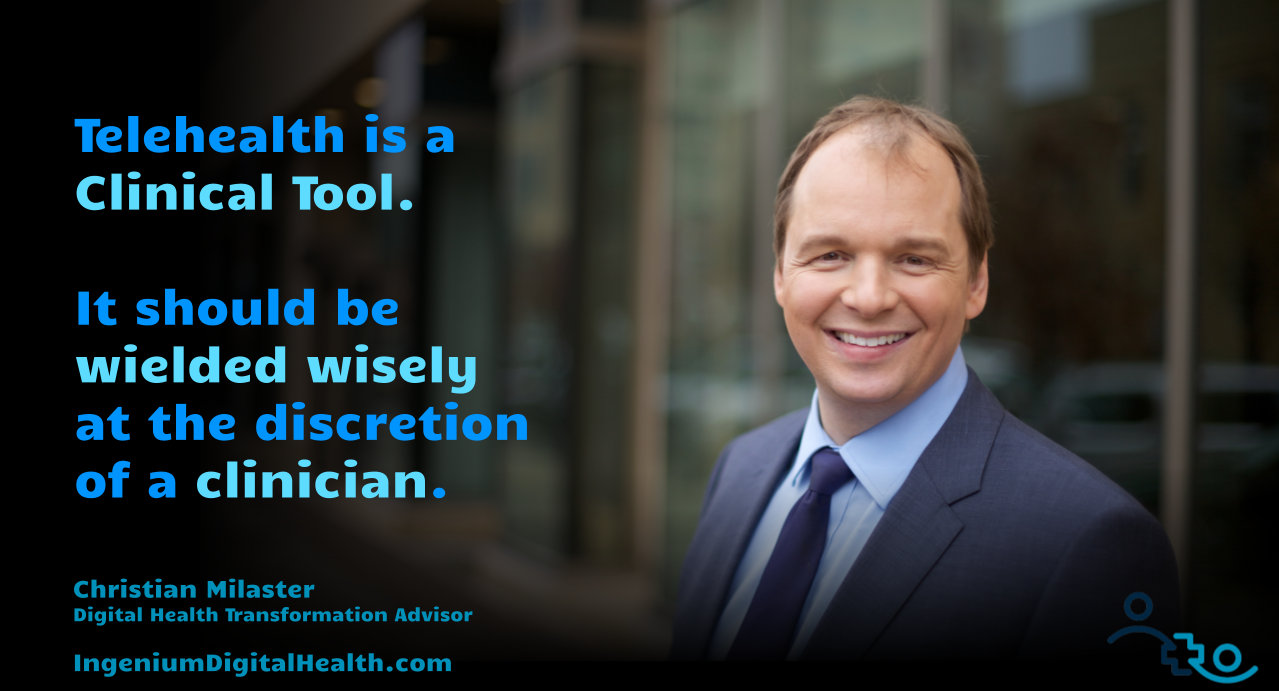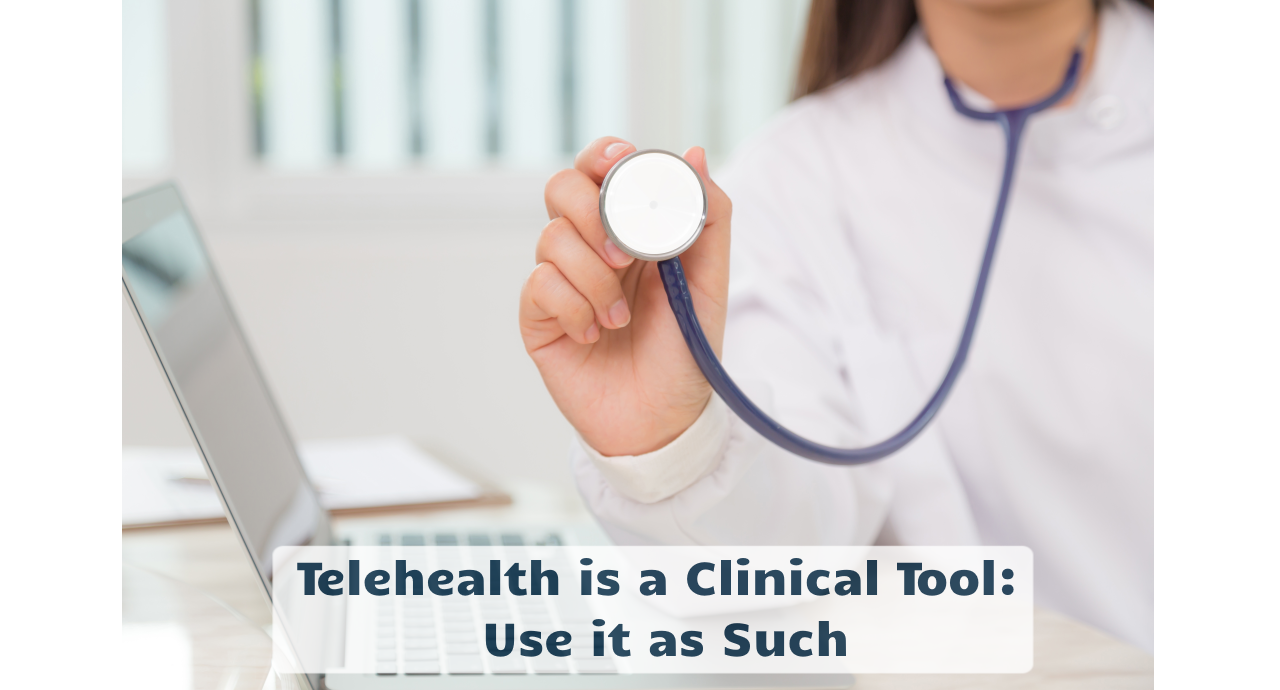Telehealth is everywhere. In the news. On Clubhouse. On the radio. On the frontpage of hometown newspapers.
But we need to stop treating telehealth like it’s a novelty, or a distinctly new service offering. Or, even worse, as a “digital health” technology.
At its essence, Telehealth is merely a clinical tool. It can be a diagnostic tool or a treatment tool. And in the hand of a capable clinician telehealth can be a powerful tool that can create a great care experience and contribute to positive health outcomes.
On the other hand, if the “user” does not have the knowledge and the experience in wielding it expertly, it can be a disaster, a failure.
The assumed superiority of in-person care
I’m always astonished every time someone criticizes telehealth for its inferiority over an in person visit. I know, after 18 years in telehealth I should not be, but it still does surprise me.
Whenever I hear this, a number of thoughts come to mind:
Firstly, telehealth will beat “no visit” every single time. If the decision is between “seeing” the doctor remotely or not receiving care, a “virtual” visit will beat no care every time.
While under certain circumstances an in person visit can yield better results, oftentimes (especially during Covid) that is not an option, given our busy schedules. Especially patient populations that are juggling multiple jobs and family, a 2-3 hour commitment to a physician visit (vs. a 15 minute online visit) is sometimes not feasible.



How often can clinicians make a complete diagnosis or accurately assess treatment progress from a simple in-person visit? Oftentimes clinicians will wield other tools — such as lab tests, x-rays, MRIs, specialist referrals, etc. to make a confident assessment.
Telehealth can be used the same way. Can’t make a diagnosis? “Order” and in-person visit after the telehealth visit.
Because telehealth is a clinical tool that should be used at the discretion of the clinician.
What about the Efficacy of In-Person Care?
Thirdly, when is the last time someone questioned and evaluated the clinical efficacy of in-person visits??
A few years back the AMA published a study evaluating the quality of telehealth visits. The findings presented a lot of variation in the care quality including unnecessary prescriptions and overlooked conditions. The results were used to question whether telemedicine “was ready”, telling it to “grow up” and “mature”.
But when was a similar study completed across a wide spectrum of clinicians’ in-person visits? Everyone knows that the variability of care is very big and our experience as patients can vary widely depending on the experience and momentary alertness of the clinician.
And I’m not condemning this variability, though as a systems engineer I wish it was different and I want to help to minimize that variability.
But I’ve also come to appreciate that the human body is immensely complex, the combination of heredity and environmental factors and the similarity in symptoms can make it easy to overlook a diagnosis or to err on the cautious side.
But that’s not typically a function of virtual care, but a function of care delivery itself.
I do realize that the virtual nature can create its own problems. But so can blood tests that don’t test for certain hormones. Or using an X-Ray vs. an MRI or CT Scan and vice versa. It takes the experience of a clinician to order the appropriate test, prescribe the best treatment and decide on the best way to deliver the care.
It ultimately goes back to the notion that clinicians have virtual care at their disposal as a clinical tool that may or may not provide them with the confidence to make a diagnosis or assess the progress of treatment.
What can we do for Clinicians?
Before I wrap up this week’s article, I did not want to gloss over some basic assumptions that I’m making when it comes to making telehealth available as a clinical tool:
- The technology to deliver ”‘care at a distance” must be user-friendly: reliable, easy to use, and align with the paradigms of the clinicians.
- The workflows and processes surrounding the use of telehealth technology (e.g., scheduling, patient preparation, post-care follow-up, billing, etc.) must be well defined.
- Clinicians were adequately trained on both, the workflows and the technology
As a bonus, for really mature organizations, you can add that (4.) Clinicians have established clinical care protocols defining the proper and appropriate use of virtual care based on the circumstances and diagnosis of the patients.
What has your experience been? Is telehealth regarded as a technology? As a stand-alone or parallel service? Or is telehealth integrated into the spectrum of care delivery and diagnosis options?
Let me know, I’d love to hear!








To receive articles like these in your Inbox every week, you can subscribe to Christian’s Telehealth Tuesday Newsletter.
Christian Milaster and his team optimize Telehealth Services for health systems and physician practices. Christian is the Founder and President of Ingenium Digital Health Advisors where he and his expert consortium partner with healthcare leaders to enable the delivery of extraordinary care.
Contact Christian by phone or text at 657-464-3648, via email, or video chat.







Leave A Comment